
 |
 |
||||||||
|
|
Lessons Menu - Lesson 1 - Lesson 2 - Lesson 3 - Lesson 4 - Lesson 5 - Lesson 6 - Lesson 7 - Lesson 8 |
| Lesson Plan 1 - Transportation INTRODUCING THE SACRAMENTO HISTORY ONLINE COLLECTION |
download lesson01.pdf |
|
|
OVERVIEW STUDENT OBJECTIVES CALIFORNIA HISTORY STANDARDS BACKGROUND
ARTICLE 1 STUDENT ACTIVITY
SHEET 1 AND KEY |
ADDITIONAL ITEMS AVAILABLE IN THIS LESSON PLAN: |
|
DOCUMENTS TO DISCUSS
(view online or print screen) |
||||
| Books | Manuscripts | |||
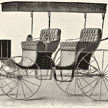 view large image |
1. Hardware, farm implements and vehicles; The Thomson-Diggs Co. [1900-1909] Light Surrey. Pages from a catalog of buggies, wagons, surreys, harnesses, tops, and other parts. |
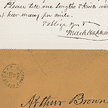 download PDF file |
2. Correspondence signed by Mark Hopkins [1868] Letter dated March 10, 1868, signed by Mark Hopkins, one of Big Four investors in the Central Pacific Railroad. |
|
| Photographs | ||||
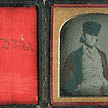 view large image |
3. Theodore Judah [1848] Daguerreotye of railroad engineer who played a key role in convincing investors and eventually the government to build the Transcontinental Railroad. |
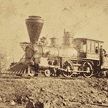 view large image |
4. Central Pacific Pacific Railroad steam locomotive No. 1 [ca. 1867] Stereograph showing the first locomotive of the Central Pacific Railroad. |
|
| Ephemera | ||||
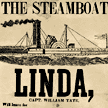 view large image |
5. Steamboat Linda [1850] Broadside advertising for freight and passengers to travel on the Linda. |
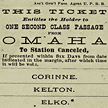 view large image |
6. Railroad ticket [1871] Ticket issued jointly by the Union Pacific and Central Pacific Railroads for travel between Omaha and San Francisco. |
|
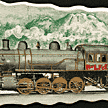 download PDF file |
7. Dance card [1912] Dance card for a ball by several organizations, including the Brotherhood of Locomotive Firemen and Enginemen California Lodge No. 260. Shows pencil attached to card. |
|||
| Maps | Postcards | |||
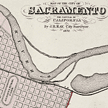 download PDF file |
8. Map of the city of Sacramento [1874] Map from Ormando Willis Gray, Gray's Atlas of the United States. |
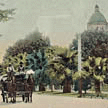 view large image |
9. Horse-drawn delivery wagon N Street. [ca. 1900] A wagon hauls its load past the California State Capitol building on N Street in Sacramento. |
|
| Prints | Technical Documents | |||
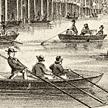 view large image |
10. Inundation of the State Capitol, City of Sacramento [1862] J Street from the Levee shows flooded street with row boats. |
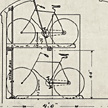 download PDF file |
11. Plan and end elevation of proposed 60 ft. baggage car for the carrying of bicycles on local train [1895] | |
|
INSTRUCTIONS 2. Read Background Article 1. You may wish to read it to your students or have them read it by themselves. Discuss any questions that they may have. 3. Introduce students to the SHO Collection by using printouts of the documents above or by showing them several records from the online database. 4. Ask students to look at some of the different documents (printed or online). Can they tell how the items are related? (age, location, subject) 5. Tell the students that the Sacramento History Online website has documents related to the history of Sacramento and Sacramento County from 1849-1929. Many of these materials are primary sources. 6. Explain the term primary sources. Discuss how primary sources differ from textbooks and modern books written about a historical time period. 7. Discuss each of the document types and ask students to give examples of each. (books, ephemera, manuscripts, maps, photographs, postcards, prints, and technical drawings) 8. To discuss ephemera: Ask students what they think the word ephemera might mean. Do they know any other words that sound similar? The word ephemera relates to object that are ephemeral. The term ephemeral means something that lasts only a short time (originally it meant lasting only a day). Once students understand the concept, ask if any of them have items in their family that came from another time period, something not necessarily intended to have lasting value (e.g. a ticket, an old postcard from a relative, a political button, a newspaper clipping). Do any of them have a scrapbook? What kinds of things do they save? What is often thrown away? 9. Give students the following activity sheet (printed from the PDF file): FOLLOW-UP 2. Make a personal scrapbook to start saving items that might be of interest to you or to someone in the future. 3. Make a list of materials representing the different document types that would tell someone in the future about your community. What things should be shown in photographs in order for them to be included? What maps should be included? What ephemera? 4. Make a community scrapbook containing items that document your own geographical area. REFERENCES AND RESOURCES Edinger, M. Seeking history, teaching with primary sources in grades 4-6.
Noren, Catherine. The way we looked, the meaning and magic of family photographs.
RELATED LINKS The Learning Page, American Memory Collections, Library of Congress The Daguerreian Society: A History of the Daguerreotype A Brief History of Daguerreotypy Stereoviews of the Nineteenth Century Viewing a Stereograph (without a viewer) |
| Sacramento History Online © 2003 - 2004 | |